Media Studies Midterm
1/138
There's no tags or description
Looks like no tags are added yet.
Name | Mastery | Learn | Test | Matching | Spaced |
|---|
No study sessions yet.
139 Terms
Establishing Shot
To build ambience, giving an idea of what’s to come (Usually introduces a new location)
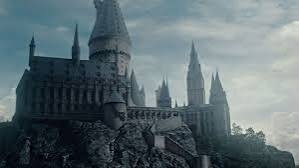
Close up shot
To show emotion and reactions of characters at close range
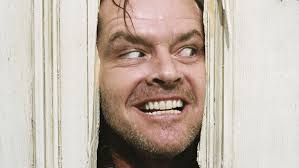
Extreme Close Up Shot
To show extreme and intense emotional detail (Shows mainly facial features)
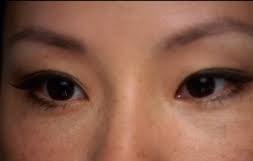
Mid-Shot
Allows views to pick up subjects movements and gestures showing their face and body language
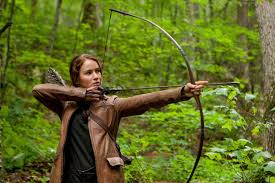
Wide shot
Allows audience to absorb all the relevant information at once so they have contact for what’s gonna happen
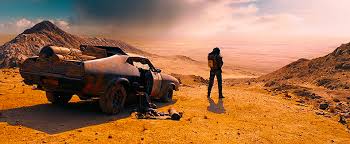
Extreme wide shot
To show what is surrounding the subject, showing how unimportant they’re to the environment around them

Two Shot
Shows emotional interaction and reactions between 2 subjects, establishing the changing relationship between them.
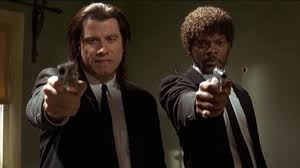
Aerial Shot/Birds eye view
Gives audiences a deeper understanding of whats happening below
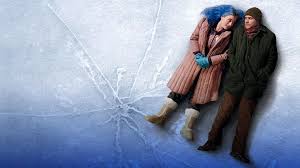
Point of View Shot
Sheds light on a new perspective

Over the Shoulder Shot
To show viewers the relationship between 2 characters behind their shoulder, growing a sense of intimacy
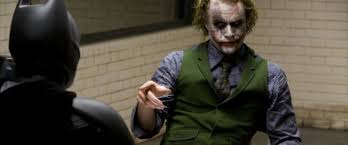
High Angle
Makes the subject seem vulnerable, powerless, or weak
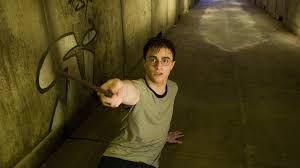
Low Angle
Makes subject look strong, heroic, menacing, etc
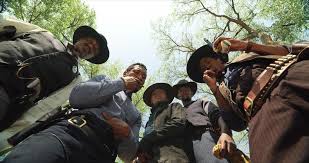
Canted/Dutch Angle
Creates dramatic effect portraying unease, disorientation, etc.
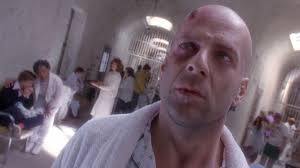
Camera Movement
A powerful filmmaking tool employed to modify the relationship between the subject and camera frame to reveal information
Pan Shot
Camera rotates horizontally side to side and doesn’t move to follow the subject to show distance
Static Shot
Camera shot with no movement whatsoever to emphasize the appearance and movement of the subject against its environment (Captured on a tripod)
Track/Trucking/Crab Shot
Very similar to the dolly, where the camera moves on tracks side to side along with the subject
Boom Shot
A cranes used to lift the camera to look down at something and move in all directions to take in the scene
Whip Pan Shot
To pan the camera from one shot to another creating motion blur
Arc Shot
Where the camera moves around the subject to show more surroundings
Steadicam
Piece of equipment strapped onto an individual to create really smooth footage while moving
Handheld Shot
Held by someone to make the viewer feel as if they’re in the scene where it’s usually shaky to help make the shot more “real” or urgent
Tilt Shot
Camera rotates up and down to follow the subject to reveal something and show height (Used for low and high angle shots)
Zoom Shot
Camera lens moves closer in or further out to bring objects at a closer distance showing size and perspective
Dolly Shot
Moves forwards or back to bring objects at a closer distance
Dolly Zoom
When the cameras moving in the opposite direction than the zoom
Dolly In
Towards Subject
Dolly Out
Away from subject
Fade
A transition between shots that appear on screen as a brief in interval with no picture
Jump Cut
An elliptical cut appearing to be an interruption of a single shot
Eyeline Match
A transition that shows attraction between two shots, the first showing the character looking off-screen and the second showing what the characters seeing
Shot/Reverse
A transition where two or more shots are edited together that alternates characters typically in a conversation situation
Cut in/Cut Away
An instantaneous shift from distant framing to a closer view of something for the same space
Dissolve
A transition between two shots during which the first image gradually disappears while the second image gradually appears
Cross-Cutting
Cutting back and forth quickly between two or more lines of action indicating they are happening simultaneously
Graphic Match
Two successive shots jumped to create a strong similarity of compositional elements
Iris
Circle from a side to another
Invisible Cuts
Impression of a single take
Smash Cut
Very abrupt
Diegetic Sound
Any sound that emanates from the story, created during filming. Inside the story world. Can be heard by characters in the film.
Ex: Actors speaking to each other (Dialogue) sound from aby object on screen (footsteps, police siren) music that comes from a sound system or set.
Some types include synchronous sound, ambient sound, sound effects:
Synchronous Sounds
Sound whose timing matches with what is seen on screen is called__________
Ambient Sound
Background sound which are present in a scene or location. Natural sounds of the room (ex. wind, water, birds, crowds, office noises, traffic, etc.)
Provide audio continuity between shots
Establishes or reinforces the mood.
Sound effects
A sound other than speech or music made artificially, sound added to visuals in editing.
Dialogue
An on screen conversation between 2 or more people would be considered part of the ____________
Non-Diegetic Sound
Voice-overs and movie soundtracks are all sounds that characters on screen can not hear and are therefore part of _______ sound
Sound Motif
A sound effect of combination of sound effects that are associated with a particular
Every time we see the Pink Panther on screen we hear the same jazzy music, this is an example of ______________
Voiceover
The voice of an unseen narrator speaking. Often guide or informs the external audience but can be used to push them in the wrong narrative direction
Sound Mixing
Layering sound, tweaking level on every video file dialogue, sound effects, music, etc…
Sound Bridge
Sound continues across one or more cuts/transitions.
Sound Perspective
Although a scene is being portrayed as being far away on screen, we hear the sound clearly as though it is up close. This is an example of a close up _____________.
Single System
Audio is captured directly into the camera, and records simultaneously, with the image. (Benefit is that it does not require audio to be synced up in post-production. This is an advantageous in news and documentary format that often require a quick turnaround of material)
Controllable Noise
Interference that can be managed (The biggest offenders of this type of noise are refrigerator, mobile phones and personal electronics)
Shotgun Microphone
Industry standard
Picks up audio without capturing excess environmental noise
Accessible like “blimp” or the cuddly sounding “dead cat” fit snuggly over the microphone and reduce distortion.
Dynamic Microphone
Used for loud spaces not requiring external power and an internal amplifier (What you picture typically as a microphone)
Lavalier Microphone
An omnidirectional microphone that clips onto an actor if they are moving often (Lacks frequency balance)
Melodic Sound
Pleasant sound music called _____________ is often used to convey the feeling that the characters on screen are experiencing good times or happiness
Discordant Sound
Harsh and unpleasant to listen (Mostly Negative Connotations)
Contrapuntal Sound
Sound not matching screen visuals (Happy music in a war scene)
Uncontrollable Noise
Originates from forces outside of one’s control (This might be a passing car or plane, or music emaciating from a nearby building)
Score
A(n) _________________ is instrumental music made for a movie, music is composed, arranged, and played specifically for the production. It is composed to elicit an emotional response from the audience
Asynchronous Sound
separate from the visuals-could be voiceover/ dialogue from another scene
Incidental Music
Music used in a film or play as a background to create or enhance an atmosphere.
Soundtrack
All songs from or associated with the movie
Double/Dual System
Sound captured independently of the camera and onto a digital audio recorder, benefitting audio not having to be tethered to the camera
Warm hues
Helps create an active response invoking passion or aggression as well as moods of excitement and creativity
Light Red
Represents joy and love
Dark Red
Represents rage, anger, and passion
Red
Represents intense strong emotions like danger, war, blood, passion, energy, and has a sexy connotation
Orange
Represents happiness, confidence, creativity, adventurous, and energetic moods.
Yellow
Usually the most difficult color to see with the naked eye representing energy, caution, fun, sunny, encouragement, etc. Enhances concentration and metabolism, however, can cause agitation
Cool Hues
Creates mood of peacefulness and tranquility reducing tension. Can also aid concentration from these passive calming qualities.
Green
Represents health, nature, regeneration, harmony, wholesomeness, and contentment. It is the easiest color to the naked eye and as well represents transportation, movement, and progress.
Dark Green
Represents finance
Lime Green
Represents Health, Vibrancy, and Freshness
Pink
Induces calmness while representing comfort, femininity, and tranquilizing elements
Blues
Represents serenity, peace, security, sadness, loyalty, trustworthiness, honesty, intensity, and peace. Can also represent a bad omen and can associate with clear thinking and intellect
Purple
Represents Beauty, Inspiration, Wealth, Regal, Prestige, and mystic. It is also usually adolescent females favorite color.
Dark Purple
Represents moody, heavy, instability, and uneasiness emotions
Neutral
Represents peace and calm to reliability or boredom that’s great for adding stability and balance. Can include white, black, gray, and colors that contain amounts of gray.
Black
Represents evilness, indication of power, death, mystery, and mourning. Can be associated with prestige and wealth in western culture.
White
Represent innocence and purity that can as well mean fresh starts and simplicity. As well represents angelic/heavily elements. (Cold & Stark)
Brown
Creates a sense of loneliness, sadness, and isolation as well as represent emotions like strength, reliability, security, safety, and warmth
Saturation
Intensity of color
Hue
Color
Color Shading
Pinks a lighter shade of red and is associated with tenderness or sweetness as opposed to passion or blend.
Genre
A way of categorized media texts based on similar stylistic traits
Narrative
Structure and development of a story
Representation
The portrayl of an individual, group, place, or event
Iconography
Images that mean something or represent something specific (Red roses to love/romance)
Narrative Themes
Ideas and topics explored throughout the narrative
Protagonist
The main character
Nick Lacey
Argued that staple ingredients help the audience understand what genre a media text belongs to)
Steve Neale
Argued that genres rely on repeated elements as well as elements of difference (PLEASURE OF FAMILIARITY)
David Buckingham
Argued with Steve Neale but adds how genres develop to reflect the social, cultural, and political issues of the time
Genre Hybridity
The mixing of two movie genres that allow the pleasure of difference by blending conventions to create something new
Theory Focus
John Fiske asserts on the importance of genre in creating structure and convenience for audiences and producers
Premise
Overarching meaning behind the story
Plot
The events happening in the story
Antagonist
The character opposing the main character
Linear Narrative
A story in chronological order